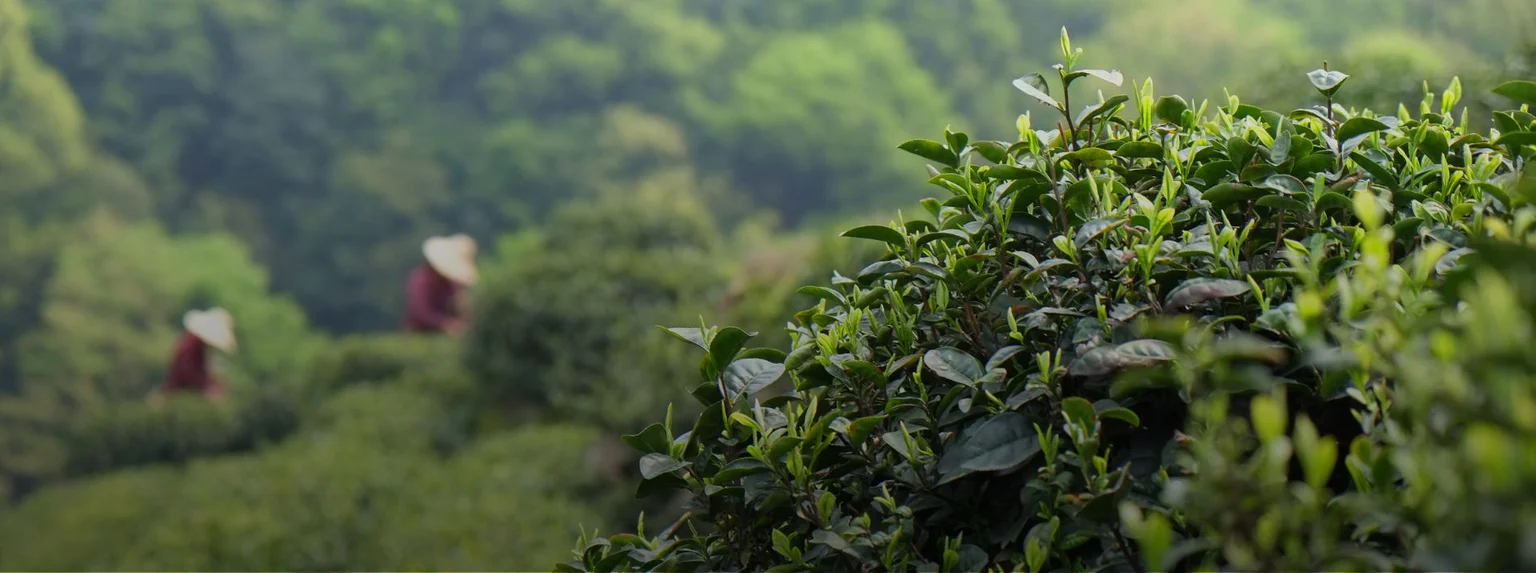
Blog
Types of Chinese tea
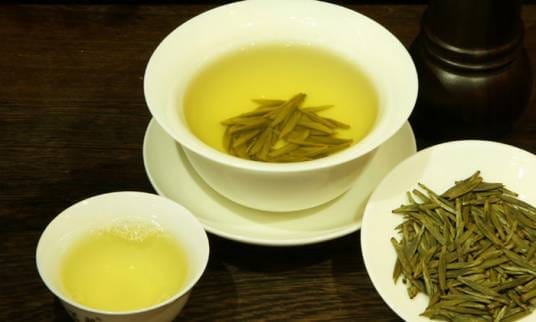
Chinese tea culture has a long history and there are numerous types of tea. Among them, the most widely recognized classification is the six major types of tea (green tea, white tea, yellow tea, oolong tea, black tea, and dark tea). Each type of tea has a distinct flavor due to different processing techniques and origins. Today, let’s take a look at the six major types of tea in China!
The types of Chinese tea
1.green tea
Green tea is an unfermented tea that retains the natural substances of fresh leaves. The characteristic of green tea is that after the fresh leaves are picked, high temperatures quickly kill the enzymes in them and inhibit the oxidation of tea polyphenols. Therefore, green tea has the characteristics of “three greens” : the dry tea is green, the tea soup is green, and the leaf base after brewing is also green. The clear soup and green leaves have a fresh and refreshing taste. Representative teas include West Lake Longjing, Biluochun, Huangshan Maofeng, etc. They are suitable for daily consumption, especially in summer, as they can clear heat, relieve summer heat, and refresh the mind.
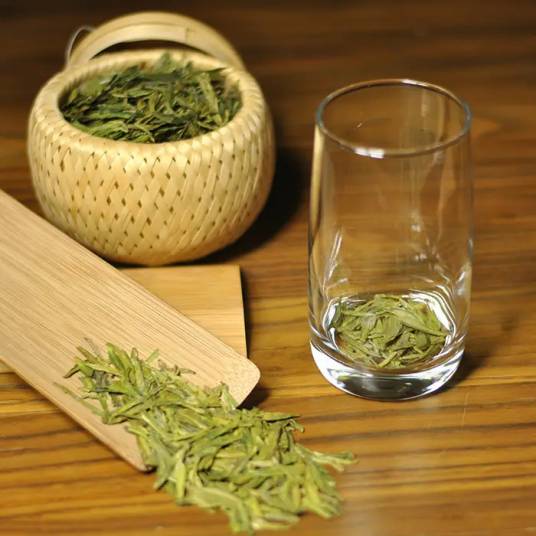
2.White tea
White tea is a slightly fermented tea. Its processing is natural, without stir-frying or rolling. It is naturally brewed for two to three days without any slight fermentation. It neither promotes nor inhibits the oxidation of tea polyphenols. Only withering and drying are carried out. The unique processing technique retains the natural characteristics of the tea, with a prominent downy aroma and a light, sweet aftertaste. According to the tenderness of the raw materials, they are classified into White Silver Needle, White Peony and Shou Mei. The buds of Baihao Yinzhen are plump and covered with white down. The white peony resembles a flower. The leaves of Shou Mei are slightly plump and tender. After storage, it has a richer taste and certain medicinal value, making it suitable for people who pursue natural flavors and health preservation. The dry tea of white tea is covered with white down. From a distance, it looks like a small mountain covered with snow. Therefore, it is named White tea.
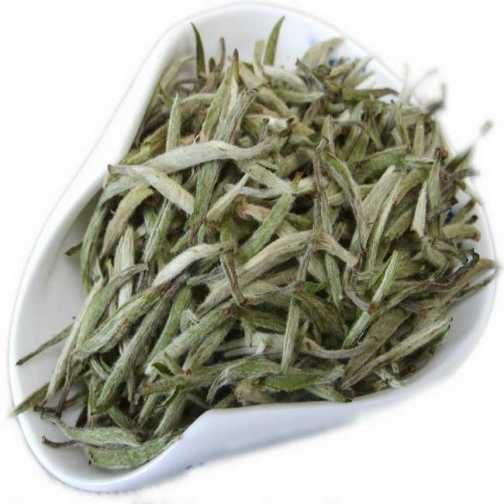
3.Yellow tea
Yellow tea is rare, and even people living in yellow tea areas may not know about it. People who know how to cook know that vegetables will turn yellow if left in a pot. Yellow tea is also like this. After withering like green tea, yellow tea leaves turn yellow through two methods: moist heat and dry heat. Huangcha is a lightly fermented tea that adds a “yellowing” process on the basis of green tea technology, forming the characteristics of Huangye Huangtang, sweet and mellow. According to the age and tenderness of fresh leaves and the size of buds and leaves, it is divided into Huangya tea, Huangxiao tea, and Huangda tea. Junshan Silver Needle is a representative of Huangya tea, with robust buds resembling silver needles; Mengding yellow buds have a flat and straight appearance; Luoshan Maojian is a representative of Huangxiaocha. The production is relatively small, and tea lovers who enjoy unique flavors can try it.

4.Oolong tea (green tea)
Oolong tea, also known as blue tea, has a processing technique between green tea and black tea. It combines the freshness of green tea with the richness of black tea and is a semi-fermented tea. However, this “half” is not very accurate. Among oolong teas, the least fermented Baozhong tea is approaching that of green tea, and the most fermented Dongfang Meiren tea is approaching that of black tea (both of these extreme teas are from Taiwan). The production process of oolong tea is complex, including withering, withering, pan-frying, rolling and baking. According to their place of origin and processing techniques, they are classified into northern Fujian oolong, Southern Fujian oolong, Guangdong oolong and Taiwanese oolong. The province with the largest output of oolong tea is Fujian. The well-known Tieguanyin and Da Hong Pao both belong to oolong tea. Tieguanyin is a representative of Minnan oolong and has a natural orchid fragrance. Da Hong Pao is a representative of northern Fujian oolong, with a distinct “rock flavor”. Brewing requires skill and is suitable for savoring slowly and enjoying the aroma of tea.
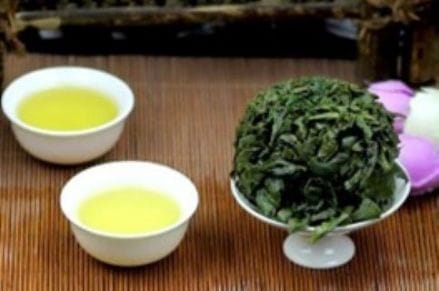
5.Black tea
Black tea is a fully fermented tea, made through withering, rolling, fermentation and drying. Withering, rolling and fermentation are all aimed at promoting the oxidation of tea polyphenols in black tea, thus forming the characteristics of red leaves, red soup and sweet, mellow taste. Tea polyphenols themselves are colorless substances. During the processing of black tea, the catechins in them polymerize to form yellow theaflavins and red thearubigins. Therefore, the tea soup of black tea is bright red and the leaf base is also red. It is only during the drying process of black tea that due to the loss of moisture, the color of the tea pigment on the surface of the tea leaves darkens, so the dry tea of black tea is black. There are various types of black tea. Among the small-leaf black teas, there is Zhengshan Xiaozhong, which has the aroma of pine smoke and the flavor of longan soup. Large-leaf black teas include Dianhong and Yinghong No. 9. They have a fresh, high and lasting aroma, with a rich floral and fruity scent, and a hint of sweetness. The aftertaste is quick and long-lasting, leaving a deep impression on the palate. Among the black teas of the Gongfu style, there is Keemun black tea, which has a unique “Keemun aroma”. It is suitable for drinking in winter and can be made into milk tea with milk. It is suitable for people who like a sweet and mellow taste and have a cold stomach.
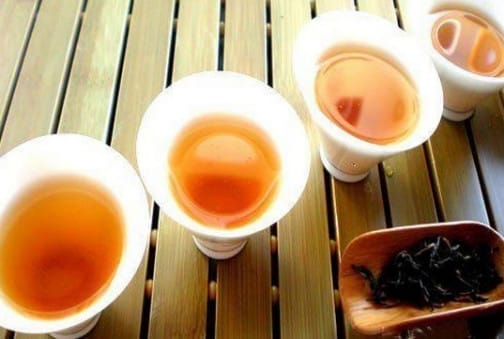
6.Black tea
Black tea is a post-fermented tea. Its production process includes pan-frying, rolling, piling and drying. Piling is a unique process. With the help of microorganisms, tea polyphenols are further oxidized, forming a distinctive aged aroma and rich taste. Both black tea and dark tea promote the oxidation of tea polyphenols and the transformation of their internal quality. The difference between black tea and dark tea lies in that the enzymatic reaction force of black tea comes from the enzymes of the tea leaves themselves, while that of dark tea comes from the enzymes produced by microorganisms. Therefore, dark tea is called a post-fermented tea that inhibits the enzymatic activity of the tea leaves themselves and promotes the activity of microorganisms. The main types include Hunan dark tea, Hubei aged green tea, Sichuan border tea and Yunnan Pu ‘er tea. Pu ‘er tea is divided into raw tea and ripe tea. Raw tea is fresh and has a strong tea aroma. The ripe tea has a rich aged aroma and a deep red color. It is suitable for tea enthusiasts who enjoy a rich and mellow taste and have a passion for collecting.
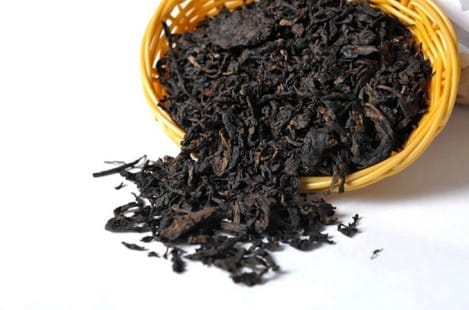
The brewing of Chinese tea
1. Green tea
Green tea is relatively tender, and the water temperature is preferably 80 to 85 degrees. The ratio of tea to water is preferably 1:50, and the brewing time is 2 to 3 minutes. The brewed tea is green and transparent, and it is best to drink it immediately after brewing.
2. Oolong tea (green tea)
Oolong tea, also known as green tea, is a semi-fermented tea. It is best to use a professional purple clay pot or a covered bowl cup to brew oolong tea, and it must be boiled with water. When brewing oolong tea, the first brew should be poured out, and then pour in boiling water to brew and drink. It can be brewed many times, and good quality can be brewed 7 to 8 times.
3. Black tea
Black tea is a fully fermented tea. It is best to use freshly boiled water to brew black tea. High water temperature soaking can promote the dissolution of beneficial ingredients. It is best to use covered bowls and purple clay for black tea. Using covered bowls can brew its original taste, and all aspects are clearly layered.
4. Yellow tea
Yellow tea is a lightly fermented tea with delicate texture. If the water temperature is too high, the tea leaves will be cooked, so the best brewing temperature is between 85 and 90 degrees. When brewing yellow tea, put a quarter of the yellow tea leaves according to the capacity of the tea set. The best brewing time for the first brew is 30 seconds, the second brew is extended to 60 seconds, and the third brew is extended to about 2 minutes. It is recommended to use a glass or porcelain cup.
5. Black tea
Black tea is a post-fermented tea, and 100-degree boiling water is used for brewing. The first time you brew black tea, you need to quickly wash the tea for 10 to 20 seconds, pour in boiling water, and cover the cup. This will not only filter out the impurities in the tea leaves, but also make the brewed tea soup more mellow. It is recommended to use a purple clay teapot or a covered bowl cup.
6. White tea
Use the best water for brewing white tea, and the water temperature should be kept between 85 and 90 degrees. Choose a transparent glass cup or a transparent proportioned covered bowl to brew the tea. You can enjoy the white tea dancing in the water, tasting its flavor and smelling its fragrance.
